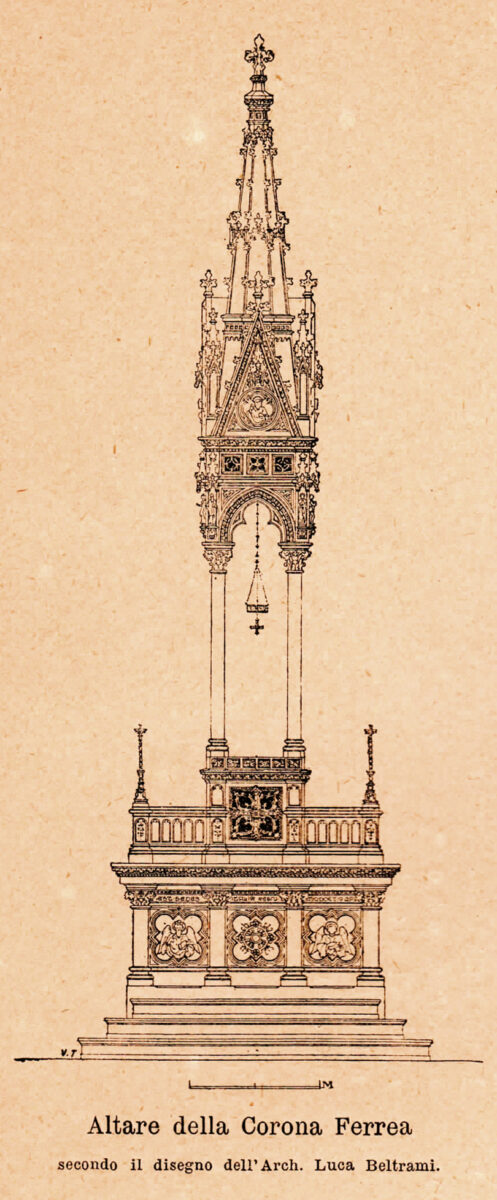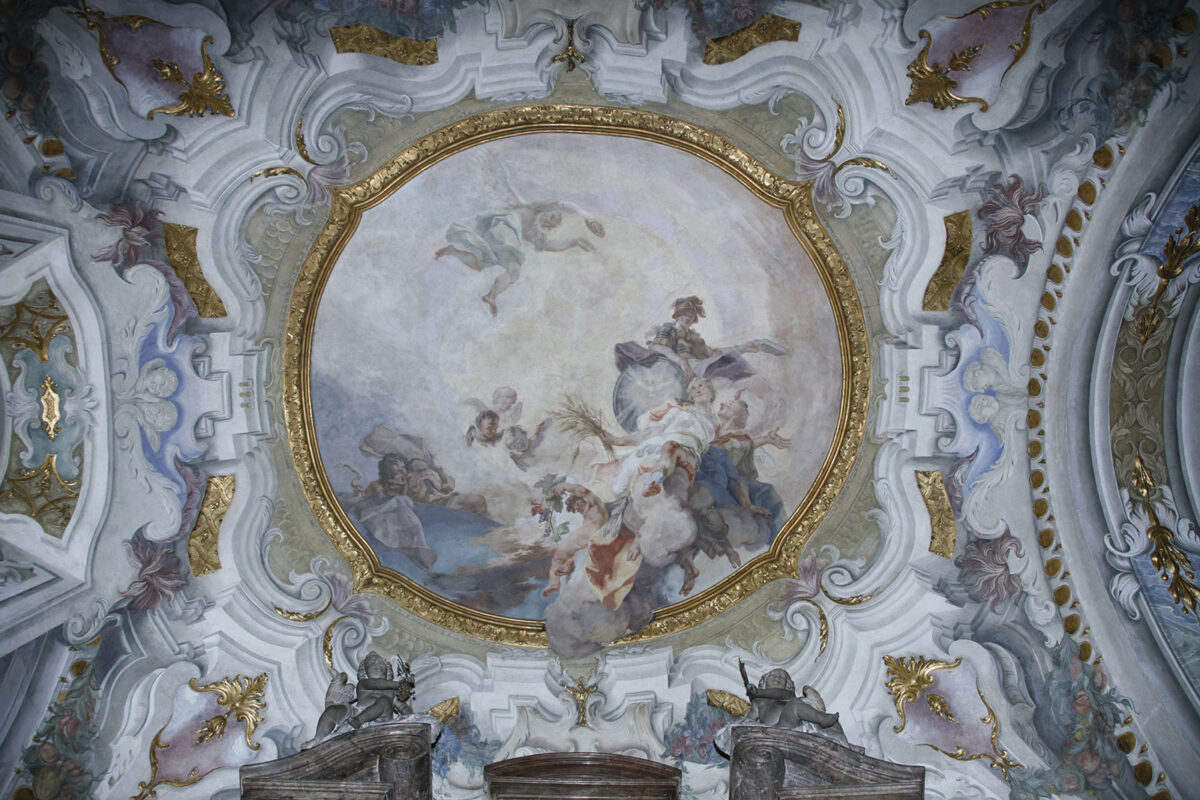With the altar of Appiani opened a new phase in the history of the Cathedral, which in 1796 was deprived of almost all its treasury, seized by the emissaries of Napoleon and only partially returned in 1816.
Although irretrievable, the losses suffered on this occasion were partially compensated by the faithful with the donation of new objects or with the legacy of ancient and rare artifacts.
In the meantime, there was a need for restoration work to remedy the disturbances that had been evident in the building.
This led to the restoration of the facade, carried out between 1890 and 1908 under the direction of Luca Beltrami, which replaced the rose window antelli with copies and reworked the entire stone coating with two-coloured bands.
In a more extensive intervention on the building, the architect also provided to transfer in the Chapel of Theodolinda the fourteenth-century sarcophagus in which the remains of the Queen were buried, also making in 1895-96 the new neo-Gothic altar of the same Chapel, destined to host the Iron Crown, which is still preserved there.









